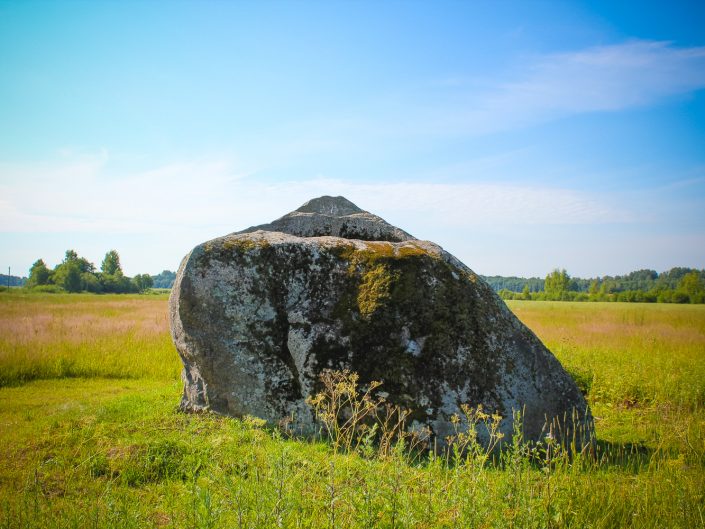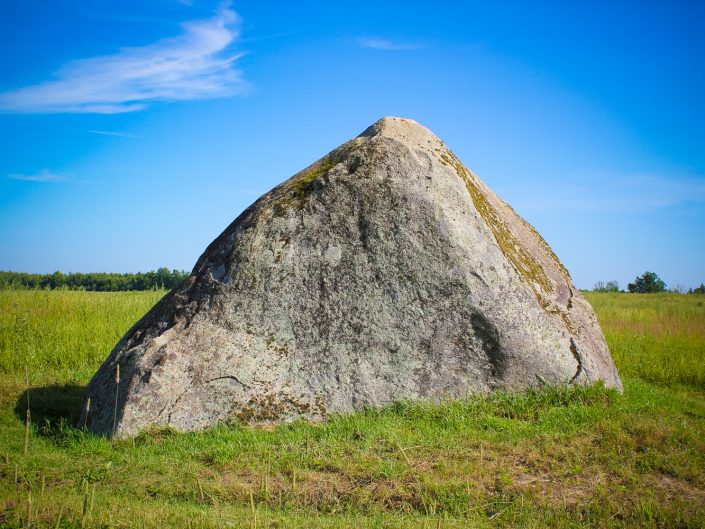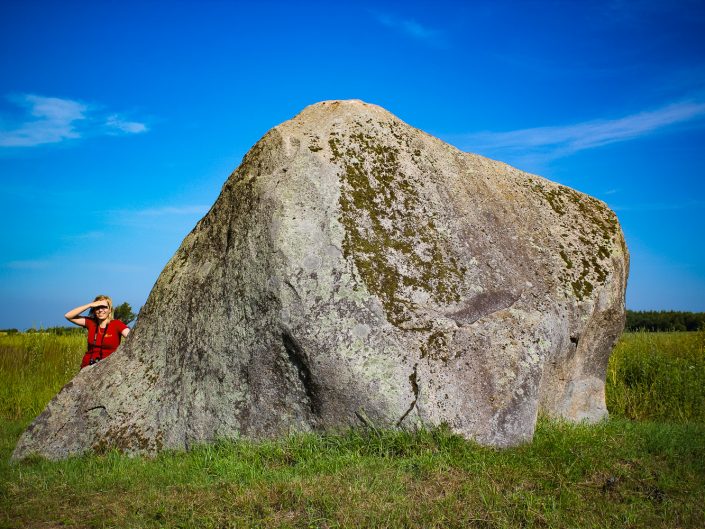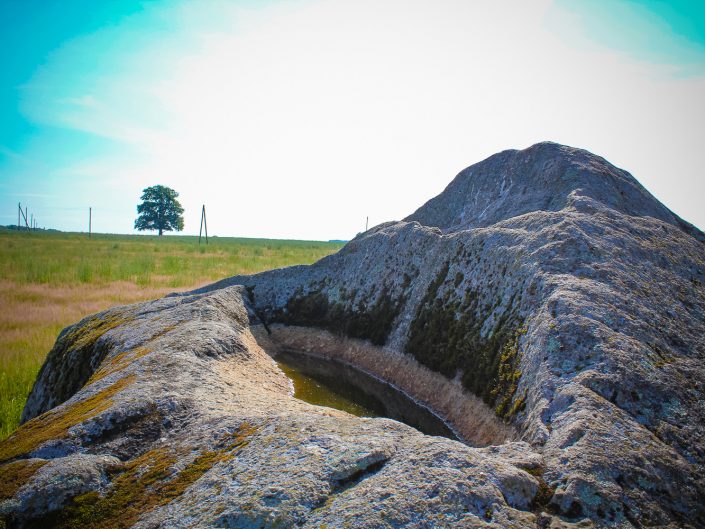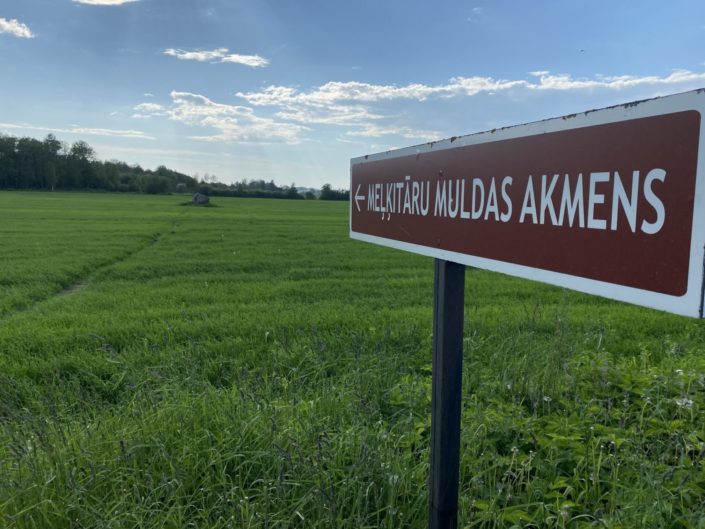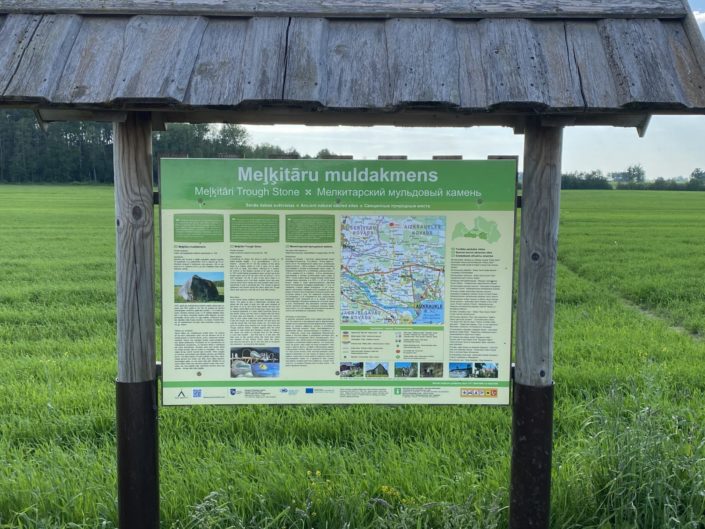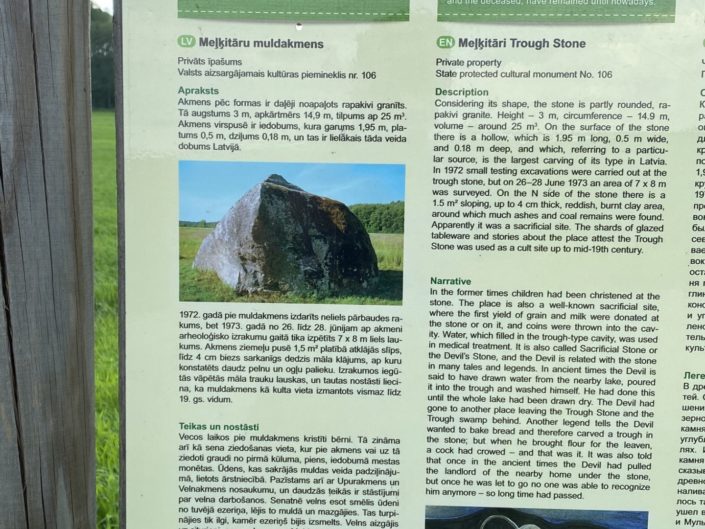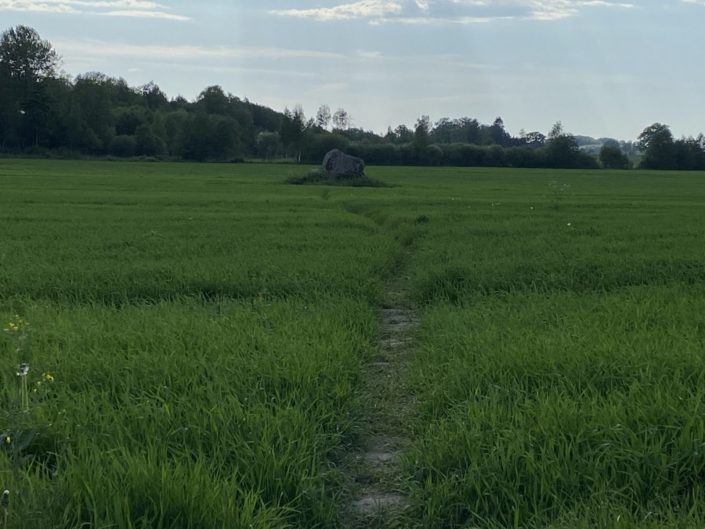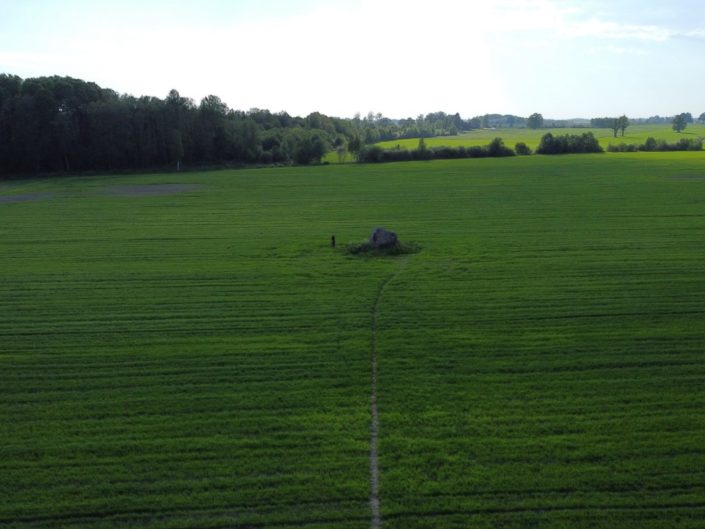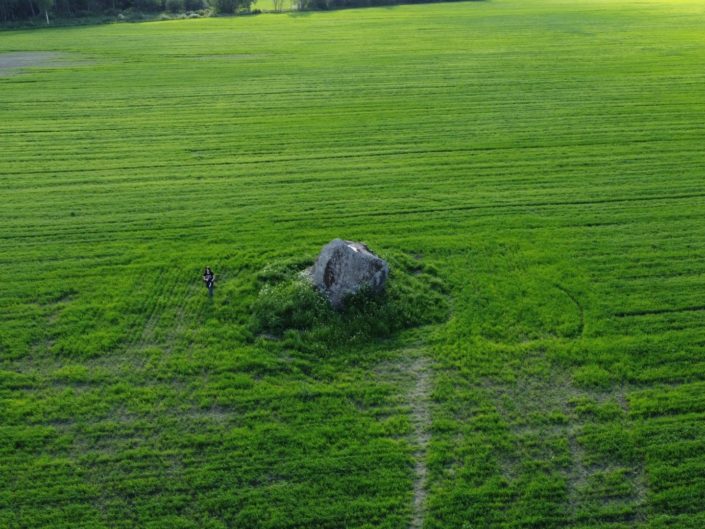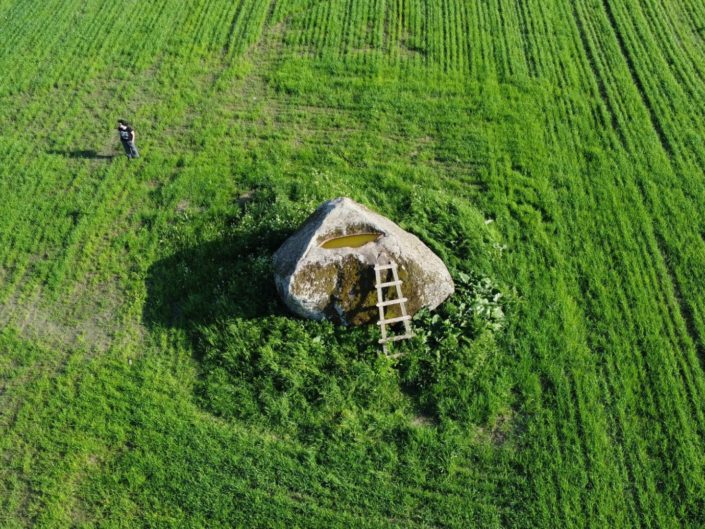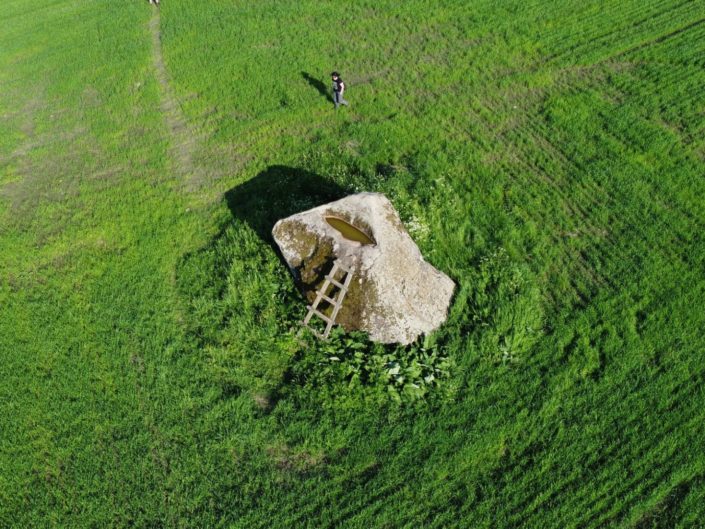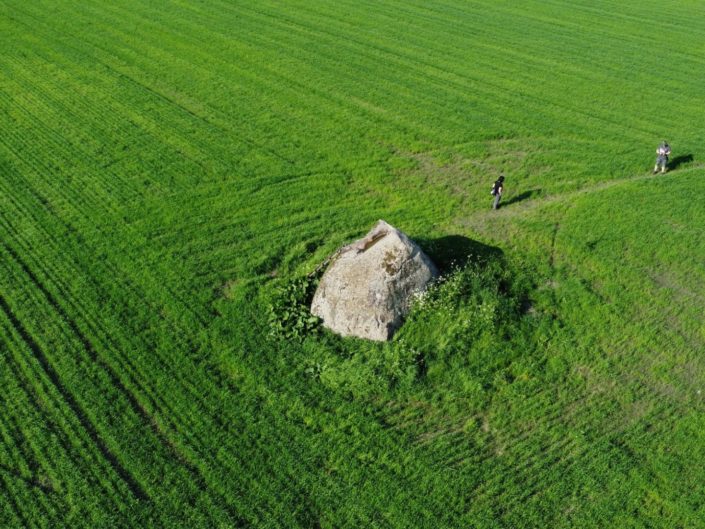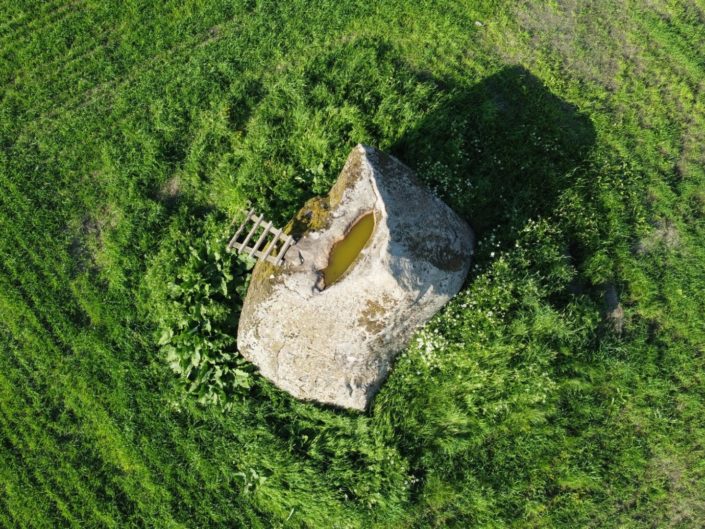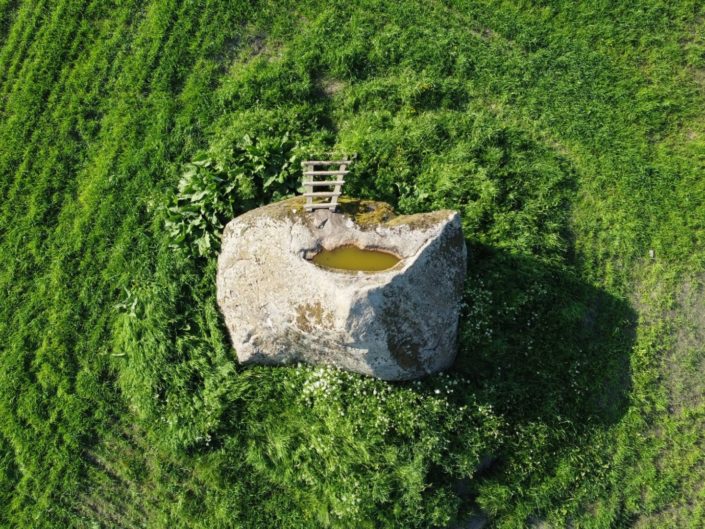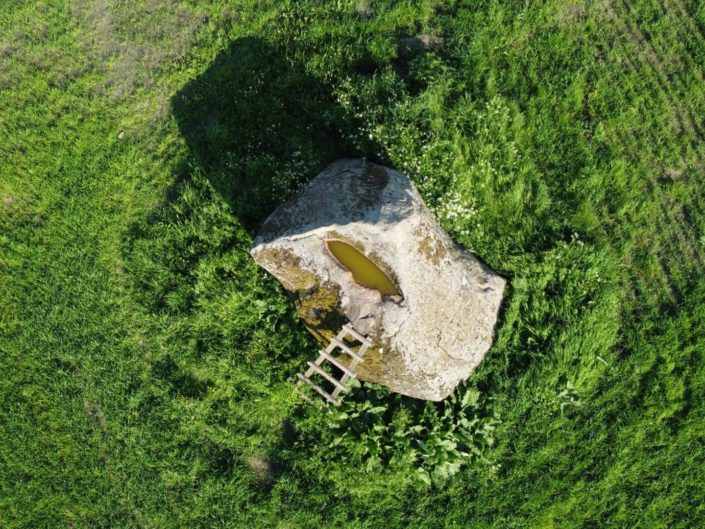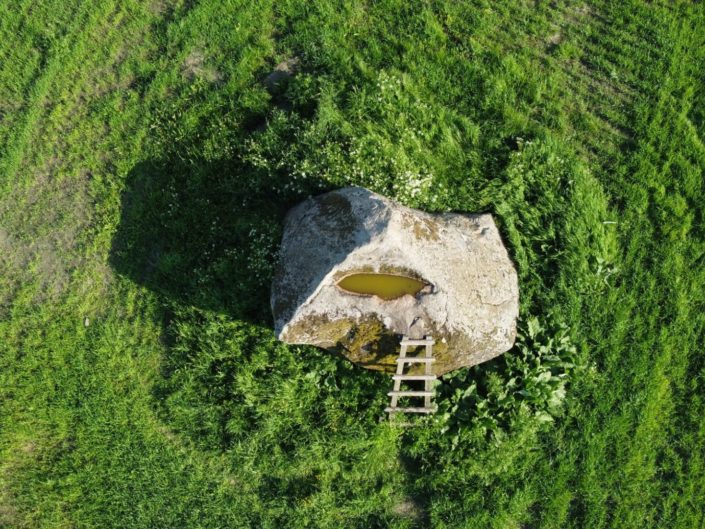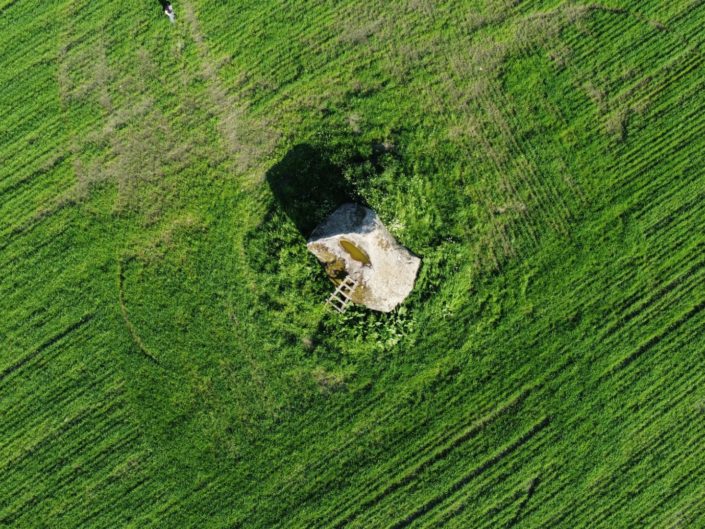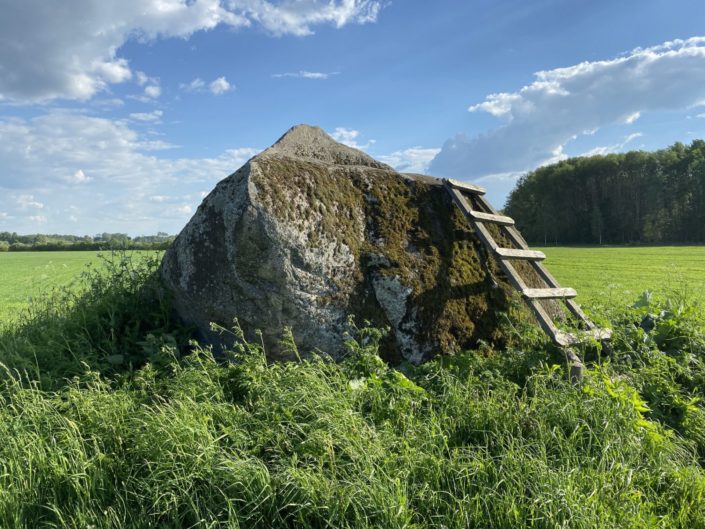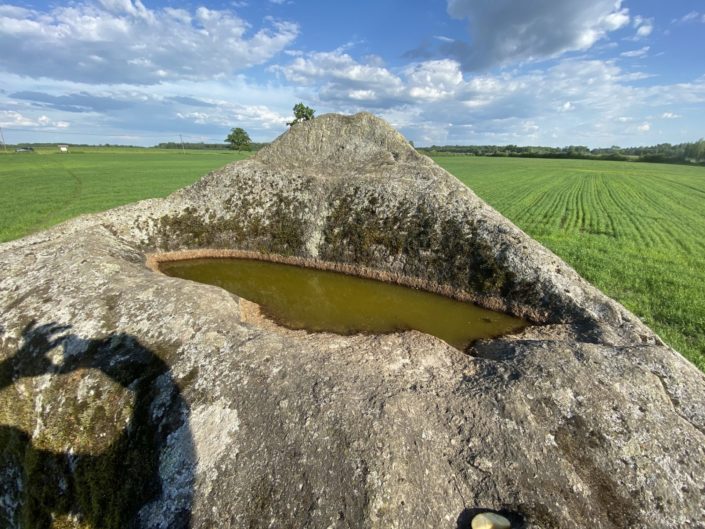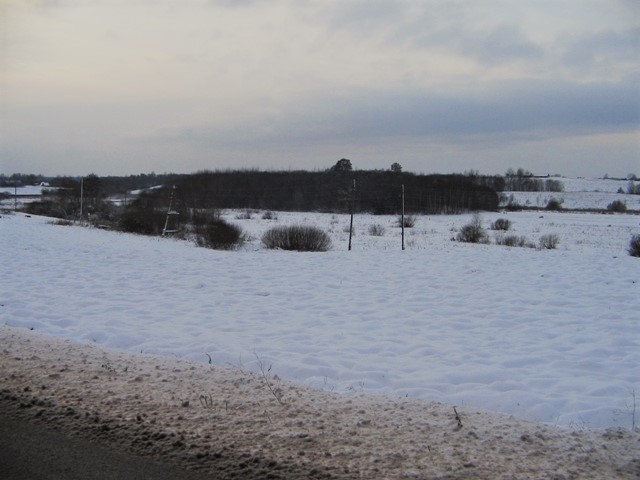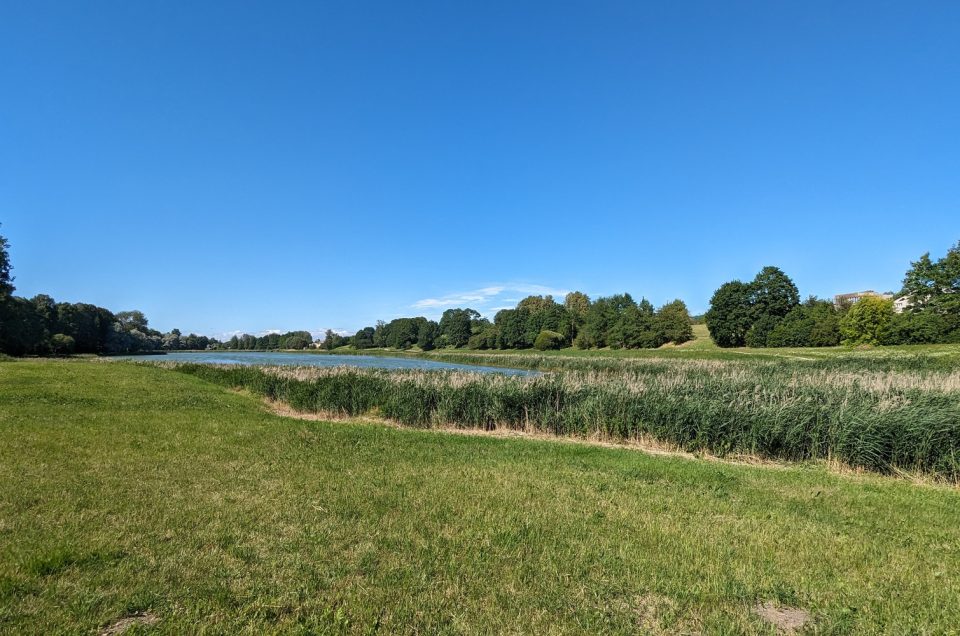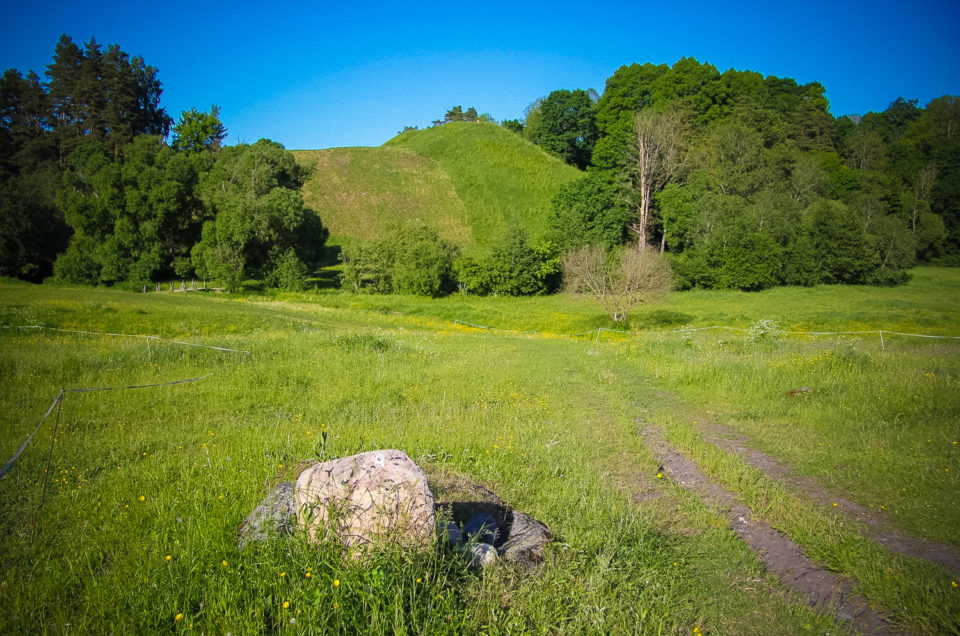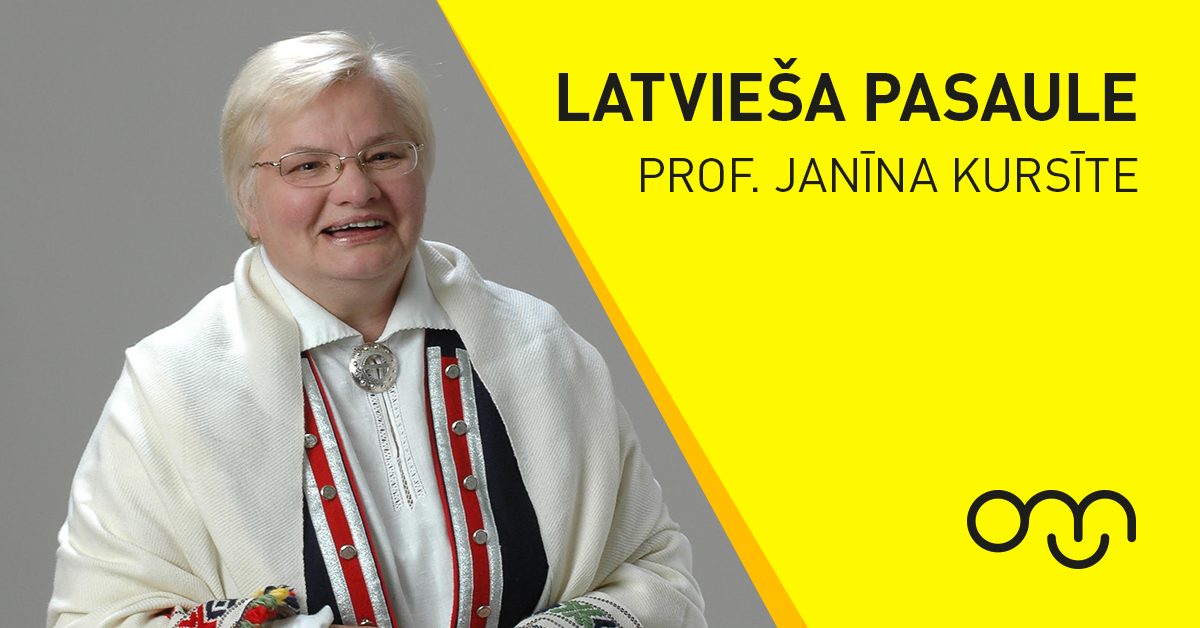Considering its shape, the stone is partly rounded, rapakivi granite. Height – 3 m, circumference – 14,9 m, volume – around 25 m3. On the surface of the stone there is a hollow, which is 1,95 m long, 0,5 m wide, and 0,18 m deep, and which, referring to a particular source, is the largest carving of its type in Latvia. Still most of the researchers are of the opinion that the hollow is a natural formation. The stone was known as a holy place already in the 19th century, when it was described. For more information see: Urtans J. Study of the ancient paga cult sites. // Research report session materials about the results of studies by archaeologists and ethnographers in 1973. – Riga, 1974 – p.74: „On the upper part of the huge stone a hollow in the shape of a trough is seen. According to stories told by locals grain from the first yield and milk was brought as an offer to or on the stone; coins were thrown in the hollow. The water collected within was used for medical treatment. / In 1972 small testing excavations were carried out at the trough stone, but on 26 – 28 June 1973 an area of 7 x 8 m was surveyed. On the N side of the stone there is an 1,5 m² sloping, up to 4cm thick, reddish, burnt clay area, around which much ashes and coal remains were found. Apparently it was a sacrificial site. The shards of glazed tableware and stories about the place attest the Trough Stone was used as a cult site up to mid-19th century.”.
There are many stories and legends told about the stone. In ancient times the Devil is said to have drawn water from the nearby lake, had poured it into the trough and had washed himself. He had done this until the whole lake had been drawn dry. The Devil had gone to another place leaving the Trough Stone and the trough Marsh behind forever. Another legend tells the Devil had wanted to make bread and this is why he had carved a trough in the stone; but once he had brought flour for the leaven, a cock had crowed – and that was it. It was also told that once the Devil had pulled the landlord of the nearby home under the stone, but having let him go no one could recognize him anymore – long time had passed. In the former time children had been christened at the stone. The place is also a well-known sacrificial site. It is also called Sacrificial Stone or the Devil’s Stone, and the Devil is related with the stone in many tales and legends. In 1973 archaeological surveys were carried out at the stone. It is said that not far from the stone a holy spring and a holy oak were located. The nearby marsh got it name – the Trough Marsh – from the stone. The archaeologist Juris Urtans site-visited the stone in 1972 together with the archaeologist Andrejs Vasks and carried out excavations in a 6m2 large area on the N and S of the stone; J.Urtans carried out excavations also in 1973.
Archaeology monument – cult site. The bus-stop located several kilometres away from the Trough Stone, between the towns Skriveri and Aizkraukle – has its name from the stone.
